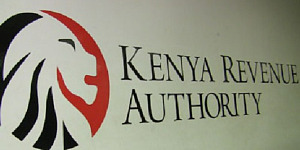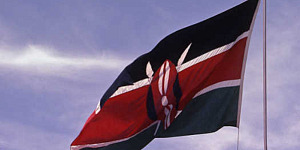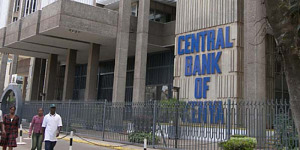Fitch Ratings has affirmed Kenya Long-Term Foreign-Currency (LTFC) Issuer Default Rating (IDR) at ‘B+’ with a Negative Outlook.
According to the rating agency, this reflects Kenya’s strong economic growth, macroeconomic stability, and favourable public debt composition.
Drawbacks for Kenya
The country’s drawbacks include a rising public debt burden, high external debt, GDP per capita and poor governance and indicators.
The country’s unfavorable rating is due to weak public finances and slow fiscal consolidation.
Although the country has had budgets that contain medium-term plans, the targets are rarely met, with deficits going beyond the budget.
Fitch says the pandemic has delayed the country’s fiscal consolidation, with the deficit forecast to reach 9% of GDP at the end of June 2021.
Fitch forecasts a slightly larger FY22 deficit of 7.7% and that cutting down this deficit will take longer than that period stipulated in the Budget Policy Paper.
The rating agency expects Kenya’s capital expenditure to continue falling as large infrastructure projects like the Standard Gauge Railway come to an end.
But it says current expenditure will remain high as the government pursues its Post Covid-19 recovery programme and its focus on targeted social spending.
Fitch expects the revenue/GDP ratio to remain flat through FY22 due to a lack of new revenue measures in the budget policy statement.
Kenya recently signed an agreement with the IMF for a 38-month US$2.4 billion support programme.
Fitch Forecasts
Fitch believes that the IMF programme will support Kenya fiscal consolidation plan, which was not completed during the 2015 deal with the Fund.
Fitch forecasts public debt to comprise 68.8% of GDP in FY21 and rise to over 71% over the medium term.
With no Eurobond floated in 2020, Kenya increased its domestic borrowing in 2021 while interest rates have remained relatively stable.
Fitch estimates that Kenya faces US$2.6 billion (2.6% of GDP) in sovereign external debt servicing in FY21 and US$3.6 billion (3.3%) in FY22
Kenya is expected to use a combination of IMF financing, a US$1 billion World Bank loan as well as a Eurobond issuance in FY21 and FY22 to service this debt.
The government has announced that it will participate in the G20s Debt Service Suspension Initiative (DSSI) in 2021 after not taking part in 2020.
Fitch forecasts that the country’s public finances could improve on the back of swift growth recovery, as real GDP returns to pre-pandemic levels in 2021.
Kenya’s growth has been supported by a steady increase in the agricultural sector, which benefited from good weather and a reprieve from the ongoing desert locust outbreak.
Economic activity was also supported by the Central Bank of Kenya (CBK), which lowered interest rates in 1Q20, lowered the banks’ reserve ratio to inject liquidity into the economy, and urged banks to adopt emergency measures to restructure existing loans.
Inflation averaged 5.3% in 2020, which is forecast to remain the same in 2021, within the Central Bank’s target band of 5%. This will allow the CBK to maintain its accommodative policy stance.
Vaccination
According to Fitch, the effort to vaccinate Kenya’s population of 50 million will stretch over multiple years, increasing the possibility of future Covid-19 waves.
This will provide some risks to economic growth, as does the re-emergence of locust swarms in early 2021 and the spectre of instability around the approaching 2022 elections.
Kenya has reported an International Investment Position for the first time, which has led Fitch to update its external debt indicators.
“At 45.7% of GDP in 2020, Kenya’s net external debt was more than 2.5x the ‘B’ median of 17.8%. High external debt reflects a recent history of large current account deficits (CAD) and a lack of non-debt creating investment flows.” says the agency in a note to investors.
Lower capital imports and an increase in remittances have helped narrow the current account deficit (CAD) to an estimated 4.8% of GDP in 2020 after averaging 7.3% in 2010-2019. Fitch forecasts the CAD to remain broadly stable, at 4.9% of GDP, in 2021, although exports are likely to remain stagnant and tourism receipts will take several years to recover.
The coronavirus shock has exacerbated Kenya’s banks’ already poor asset quality, with non-performing loans (NPLs) increasing to 14.3% of total loans in January 2021, from 12.2% a year earlier.
It says NPLs will likely further increase as emergency measures on loan restructuring ended in March 2021; these resulted in the restructuring of 57% of the sector’s total loans.
However, the country’s largest banks are generally well-capitalised and provisioned.
However, Fitch warns that the financial profiles of the smaller banks are more vulnerable to the pandemic.







































